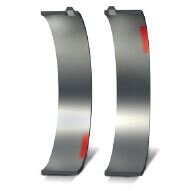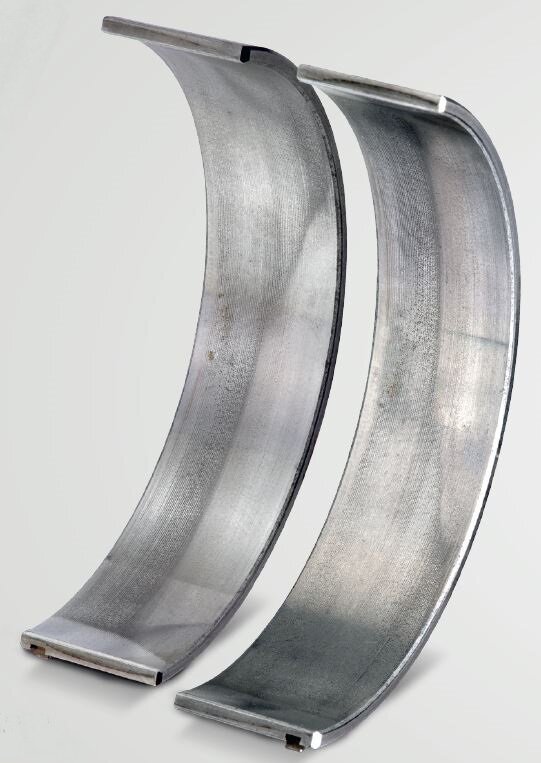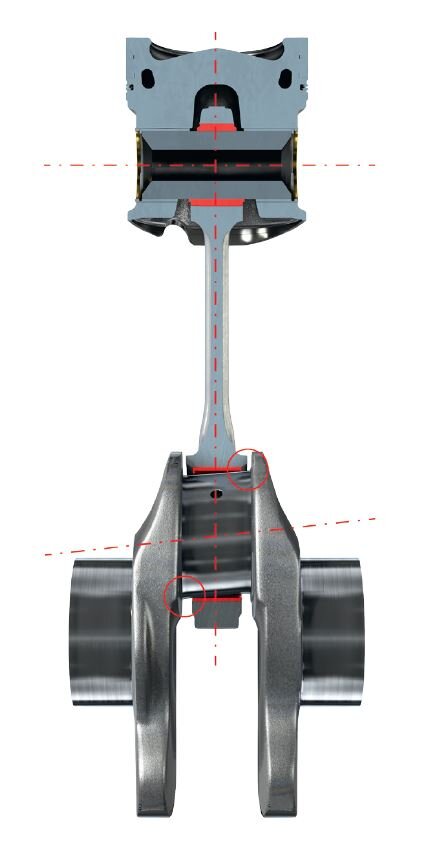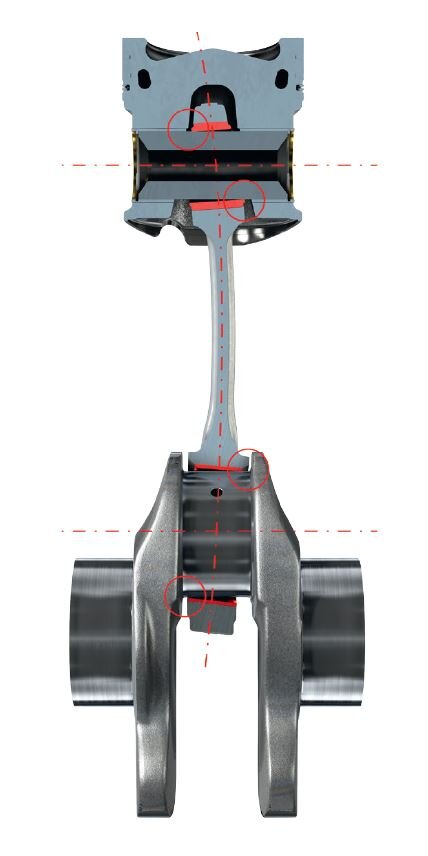One-sided alternate edge wear
DESCRIPTION OF THE DAMAGE

- Bright, light stripes of wear – opposite each other on one side of the upper and lower shells
- Identifiable signs of material fatigue or initial rubbing marks possible in the area of the edge wear
- Overheating phenomena such as discolouration possible due to thermal stress or carbon deposits in the area of the edge wear on the bearing back

Rod-side conrod bearing shell steel-brass composite with sputter coating
Cap-side conrod bearing shell steel-aluminium composite
The diagonally offset wear pattern can be recognised. At the edge of the bearing, the intensity of the wear is pronounced to differing degrees in different areas. The function of the bearing is not impaired.
Cap-side conrod bearing shell steel-aluminium composite
The diagonally offset wear pattern can be recognised. At the edge of the bearing, the intensity of the wear is pronounced to differing degrees in different areas. The function of the bearing is not impaired.
DAMAGE ASSESSMENT
The lubrication gap at the bearing edge is too low, meaning that the lubricating film is not fully stable and mixed friction occurs locally. If the shortage of lubrication continues, the temperature increases due to the frictional heat that results. This could result in overheating damage such as dark discolouration of the bearing back.
The shortage of lubrication continues to intensify due to the increasing temperature level and the process reinforces itself until the first initial rubbing marks occur and fatigue damage occurs due to increased surface pressure.
The shortage of lubrication continues to intensify due to the increasing temperature level and the process reinforces itself until the first initial rubbing marks occur and fatigue damage occurs due to increased surface pressure.
POSSIBLE CAUSES FOR THE DAMAGE
- Misalignment of the journals or housing (Fig. 1)
- Incorrect rounding radii of the shaft
- „Maladjustment“ of the connecting rod (warped or twisted) (Fig. 2)
- Deformation of the crankcase


Remedy
Bearings that exhibit edge wear can continue to be used depending on their wear condition.If these damage symptoms intensify after a few hours of operation, measures to determine the cause should be taken:
- Check for correct geometry of the crankshaft: dimensions, roundness, cylindricity, ripple, surface roughness
- Check the bearing line bore is correct: dimensions, roundness, cylindricity, surface
- Balance crankshaft during installation and check strain on the shaft
- Check alignment of the main bearing bore: during assembly of an engine, always make sure to use the specified tightening torques and bolt tightening sequence – the engine must be sufficiently cooled during operation as deformations may also occur due to temperatures that are too high
- Check connecting rods for angularity before installation